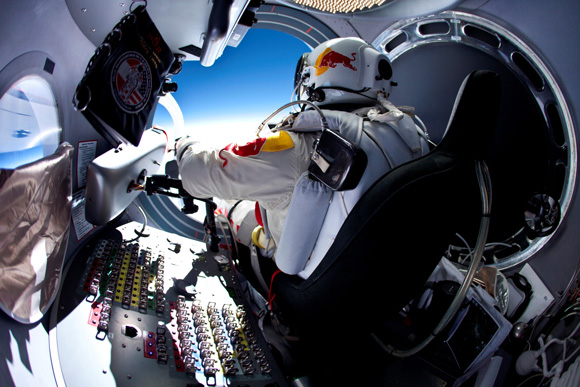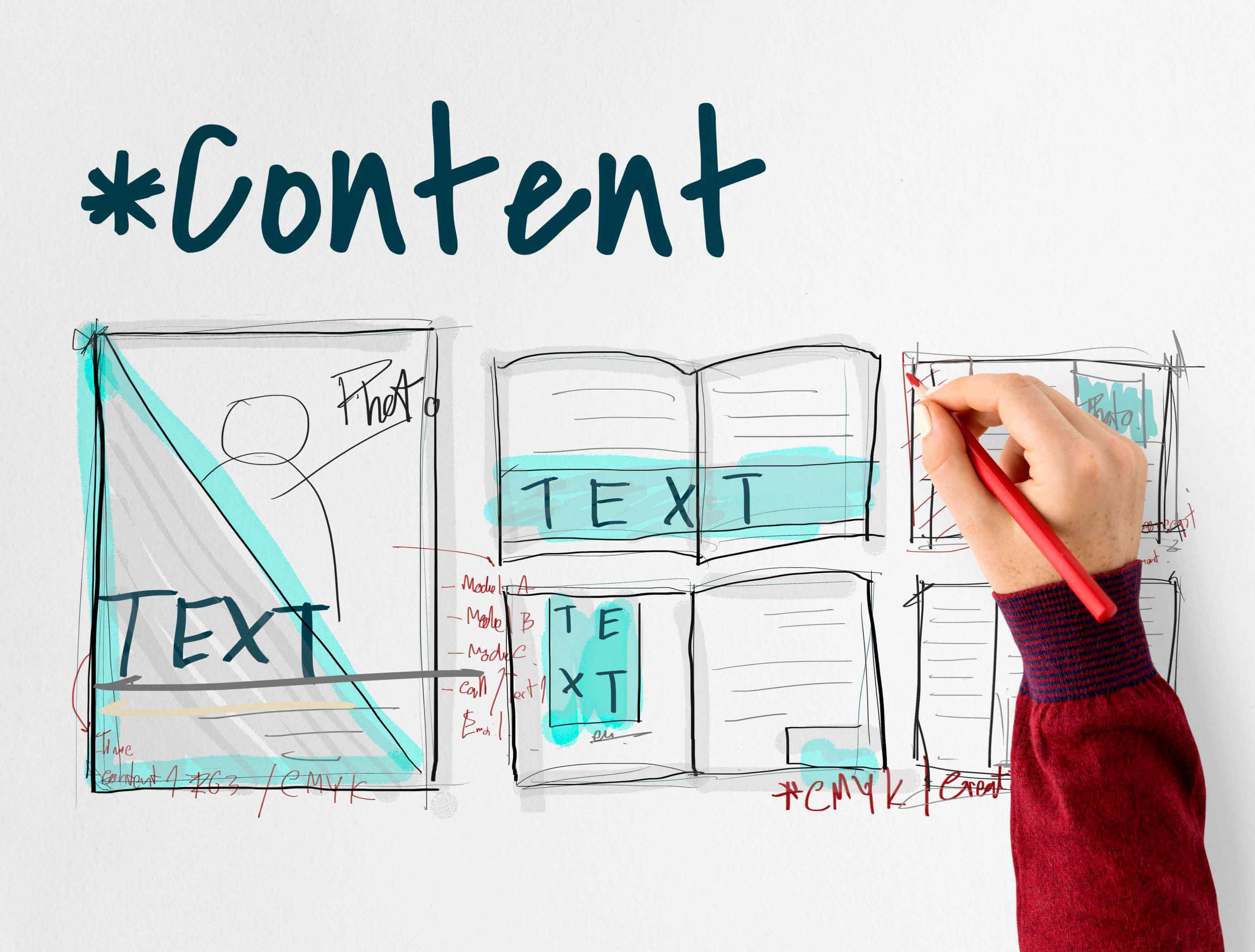History Of Red Bull's Marketing Strategy

Red Bull's Market Entry
Red Bull has a unique market entry story; it was introduced to the market in 1987 by a Thai businessman Chaleo Yoovidhya and Austrian entrepreneur Dietrich Mateschitz. The uniqueness of this story lies in the fact that it is inspired by a Thai drink called “Krating Daeng”. This drink was being sold in the Asian markets by Chaleo Yoovidhya. In Thai language, Daeng means red and Krating means bull, so basically Krating Daeng means “Red Bull”. Krating Daeng was being loved in the vast Asian markets. Austrian entrepreneur Dietrich Mateschitz saw this drink in his trip to Thailand and immediately recognized its potential. Dietrich Mateschitz later collaborated with Chaleo Yoovidhya to adapt and bring Krating Daeng/ Red Bull to the Western market. Together they created a new recipe, altered the flavor type, and rebranded it as Red Bull. The newly rebranded Krating Daeng, now Red Bull, was first launched in Austria. Even the name alone (both the original and rebranded name) suggests youth and strength. Mateschitz and Yoovidhya built upon this impression a unique branding that targets active individuals and energetic youth. Red Bull was introduced to the market as an energy drink. Do you want to learn more about marketing agencies? Discover the content called What Does a Digital Marketing Agency Do.
Initial Marketing Strategies and Evolution
Red Bull’s initial marketing strategies were very creative, innovative, and unconventional. Red Bull's bull marketing strategy involved unconventional and extreme marketing tactics. The most commonly used unconventional marketing strategy is called “guerilla marketing”. Red Bull used guerilla marketing instead of following traditional advertising methods. Guerilla marketing aims to catch the potential customers in places where they do not expect any type of advertisement such as during school hours on the compass or while transporting from home. Let’s list some of the guerilla marketing techniques used by Red Bull.
-
Sampling Campaigns: Red Bull gave free samples at universities, sports events, and parties. As you might notice, all of those occasions are a perfect fit to Red Bull’s target market. This interactive approach helped customers to get familiar with the brand and the products.
-
Event Sponsorships: Red Bull tries to create a dynamic, youthful, and energetic image. Consequently, they began sponsoring extreme sports events, such as BMX, snowboarding, and cliff diving.
-
Grassroots Marketing: Word-of-mouth is one of the most effective marketing strategies especially when it comes to creating a direct impact on customer behavior. Red Bull effectively used word-of-mouth marketing by directly engaging with influential groups and communities from its target market.
The application of innovative and unconventional marketing strategies created a strong basis for Red Bull’s future brand image and evolution. Later Red Bull changed and improved its marketing activities. The brand established “Red Bull Media House” in 2007. Red Bull created and shared content related to sports, culture, and lifestyle through this media house. These activities further engaged Red Bull’s brand image. Later with the rising use of social media, they leveraged social media and digital marketing. Red Bull has a unique creative approach towards marketing. For example, Red Bull Stratos space jump in 2012 captured global attention and reflected the brand’s fun, youthful, and innovative spirit.
Milestones of Successful Campaigns
Red Bull has many globally successful and effective campaigns. Red Bull stands out in the market with its innovative and memorable campaigns. Those campaigns are creative, innovative, fun, and they never fail to capture attention, boost Red Bull’s brand visibility and consumer engagement. Now let’s list a few of these campaigns:
-
Red Bull Flugtag (1992)

-
Red Bull Music Academy (1998)

-
Red Bull Stratos (2012)

-
Red Bull Air Race (2003)

Those example campaigns all reflect adventurous, high-adrenaline, fun, energetic, and youthful brand image of Red Bull. Red Bull as a brand has a unique ability to memorable campaigns that are created for their target market, and it further and further reinforces its brand image while also continuously growing. Click AI in Digital Marketing to learn more about how AI contributes to digital marketing.
Red Bull Gives You Wings Meaning

Let’s do an imaginary experiment with you (you can really do it though!). Go and ask random people while you are walking on the street or go ask your friends or colleagues. “What is the first thing that comes into your mind when I say ‘Red Bull’?” They will probably like %90 answer by saying “Red Bull Gives You Wings” because this slogan is so interconnected with Red Bull’s brand image.
The slogan was actually introduced early in the company’s history, shortly after Red Bull’s market entry in 1987, so the slogan and Red Bull itself are the same age. This represents how successful this slogan is when it comes to capturing the value proposition of Red Bull. Red Bull has a unique value proposition: it is supposed to increase energy and mental alertness. “Red Bull Gives You Wings” perfectly reflects the product’s intended effect of boosting both physical and cognitive performance and is a key part of Red Bull's branding strategy.
Origin of the Slogan
Dietrich Mateschitz wanted to create a unique positioning for Red Bull in the beverage market by emphasizing its energy-giving qualities and by giving it a strong, memorable tagline. The slogan must have reflected the energizing effects of the drink and it should have been simple, catchy, and memorable. Later, Dietrich Mateschitz and his marketing team came up with the slogan "Red Bull Gives You Wings" as a result of their collaborative and creative marketing process. The slogan got quickly accepted by the potential customers of the brand in the Austrian market. This success in the Austrian market later turned the slogan into a global campaign.
Relationship with the Brand
Let’s recall the simple imaginary experiment we conducted: the slogan “Red Bull Gives You Wings" has a direct relationship to the brand, and it is almost identical to it. This slogan perfectly captures the Red Bull spirit: it is energetic, it is alert, it is adventurous. Through this slogan Red Bull directly communicates and connects with its target audience of young, energetic consumers.
Impact on Consumers
The metric of success for a slogan is determined through how much impact it has on consumers. As you can guess, this slogan is one of the most successful brand slogans and has been a significant factor in Red Bull's success. The slogan improved all of the critical metrics of impact on customers that are listed below;
-
Brand Recall and Recognition
-
Perceived Product Benefits
-
Emotional Connection
-
Marketing Success
How Red Bull Reaches Its Target Customer

Red Bull Content Marketing Strategy
Red Bull reaches its target consumers through effectively applied content marketing strategies. We will focus on case examples of Red Bull Media House and Red Bull’s social media and digital content strategies.
Red Bull Media House
Red Bull Media House was established in 2007 and it is a critical part of Red Bull marketing, which emphasizes content creation and innovative marketing tactics. Red Bull Media House produces high-quality content across multiple platforms like TV, digital channels and printed channels. Red Bull Media House have successfully completed many successful campaigns and received positive feedback from the target audience. Red Bull Media House has an important role in the creation and improving of the brand image for Red Bull. Let’s list all of the activities Red Bull Media House engages in, in order to create a strong and unified brand image.
-
Content Production
-
Red Bull TV
-
Magazines and Print Media
-
Collaborations and Partnerships
Social Media and Digital Content
With the rising dominance of social media over traditional media channels, brands such as Red Bull, turned their attention towards utilizing social media channels. Social media platforms allow Red Bull to engage with their target audience in their own world. Social media marketing allows interactive and user-generated marketing activities as well as local or large-scale influencer marketing campaigns.
Red Bull Sponsorships and Event Marketing Strategy
We have mentioned Red Bull’s brand image as energetic and youthful. The easiest way to represent this image is through engaging in activities that resonate with Red Bull’s target audience. Engaging in sports events and tournaments is a way for Red Bull to be associated with youthful and energetic activities.
Sports Events and Tournaments
Red Bull sponsors many different sports events to connect with their target audiences. One of the most famous sponsorships of Red Bull is sponsorship to Formula 1 races. On top of that Red Bull sponsors different sports activities like snowboarding and motocross.
Music and Cultural Events
Music, festivals, and cultural events generally gather young people together with their fun and playful nature. Red Bull Music Academy Awards are an example of Red Bull’s engagement in the different musical and cultural activities to increase natural engagement with their consumers.
Do you want to learn about landing pages? Click What Is a Landing Page to discover.
Red Bull Brand Ambassadors and Influencer Marketing Strategy
One of the most effective strategies of Red Bull is completed through their engagement with Red Bull brand ambassadors and influencer marketing partnerships. Brand ambassadors and influencer marketing partnerships have an advantage of reaching Red Bull’s target audience through their organic fanbase. This creates a more natural communication for Red Bull’s products and the target audience.
Famous Athletes and Artists
Red Bull works with athletes and artists that resonate with the brand’s desired and existing image. Let’s list some of the most well-known partnerships of Red Bull with athletes and artists.
-
Neymar Jr.: The Brazilian footballer matches the brand's desire to connect with youth.
-
Sebastian Vettel: Sebastian Vettel is a German Formula 1 driver that has won many Championships with Red Bull Racing.
-
Lindsey Vonn: Lindsey Vonn is a female American alpine ski racer who represents Red Bull’s commitment to extreme and adrenaline-driven sports.
Influencer Partnerships
Red Bull collaborates with influencers who resonate with their target audience such as healthcare or fitness bloggers, travel bloggers or adventurers. Such influencer partnerships allow Red Bull to be connected with the young and more digitized target audiences. Let’s list some of the most prominent influencer partnerships for Red Bull.
-
Sarah Dietze: Sarah Dietze is a fitness and wellness influencer that focuses on keeping a healthy and active lifestyle. Sarah Dietze’s content is in alignment with both brand image and the target audience for Red Bull.
-
Jay Alvarrez: Jay Alvarrez is an adventurous travel blogger who shares his trips to exotic locations and his involvements in some extreme sports. Jay Alvarrez promotos adventurous and fun lifestyle with his partnership with Red Bull.
-
Maddie Ziegler: Maddie Ziegler is a well-known dancer and actress who starred in some famous music videos as a dancer. Maddie Ziegler has previously collaborated with Red Bull and aimed to connect with the energetic youth.
Red Bull's Marketing Mix (The 4 P’s)

One of the first topics you will learn in a marketing course or class is the “Marketing Mix” or you might hear it as “The 4 P’s of Marketing”. The 4 P’s of Marketing are; product, price, place, and promotion. Those 4 components are equally as important for any marketing project to be completed and to succeed.
1. Product
Product is the first step of any marketing activity. If you do not offer any additional or different value with your product, the customers would not continue choosing your brand, no matter how well you conduct other steps of marketing. Red Bull has a unique value proposition in the energy drink market that offers an energetic image for their customers. Red Bull strengthens this image by making necessary innovations and keeping a unified brand image through branding.
Product Variety and Innovation
Markets and the demands of the customers change through time. Red Bull follows and adapts to the different demands of their target audiences. Red Bull adds different flavors or creates special edition products to keep up with fluctuating demands from the clients.
Packaging and Branding
Visual cues can be quite powerful when it comes to creating and reinforcing a unique brand association and brand image in the minds of people. Red Bull utilizes this concept and creates an unforgettable image with its silvery gray and blue packaging and the image of a red bull. Packing is a critical part of brand image creation.
2. Price
Pricing and positioning in the right market segment can be critical in determining the success, especially financial success, of brands and products. As a core financial rule, price is determined with relation to demand. If there is too much demand, you might be undervaluing the product. On the contrary, if there is too little demand, you might be setting a price too high. Depending on the product or the service you offer and on the overall situation of the market you are planning to enter, you might need to employ different pricing strategies.
Pricing Strategy and Market Positioning
Red Bull uses a premium pricing strategy and positions itself as a premium product among its competitors. Through this approach, Red Bull creates a high-quality image for itself.
3. Place
Place refers to channels where you meet your product with your target audiences. Red Bull uses a variety of channels and tools to achieve this goal.
Distribution Channels and Market Presence
Let’s investigate some examples of the distribution channels and market places that Red Bull uses:
-
Direct Sales and Partnerships: The primary channel of place for Red bull would be direct sales channels and strategic partnerships with distributors. Direct sales and partnerships are fulfilled through supermarkets, convenience stores, gas stations, bars, and nightclubs.
-
On-Premise Sales: On-premise sales aims to increase brand visibility and impulse purchases of customers. Red Bull achieves on-premise sales through gyms, sports venues, music festivals, and college campuses.
-
E-Commerce: E-commerce is a necessity for increased sales with the current rise of e-commerce. Red Bull also adapts into the e-commerce tools and offers its products through online retailers and its own website.
-
Vending Machines: Vending machines can be quite useful in places such as airports, train stations, and corporate offices to access beverages such as Red Bull.
-
Event Distribution: Red Bull usually offers its products with sponsorships to certain events such as sports competitions, music festivals, and cultural events.
4. Promotion
Promotion in the marketing mix refers to all the efforts made to promote the product to its target audience, it basically means marketing activities that aim to increase sales.
Advertising Campaigns and Promotional Tactics
We have detailly investigated Red Bull’s marketing campaigns and methods previously under the title “How Red Bull Reaches Its Target Customer”. We will now summarize all the efforts, advertising campaigns, and promotional tactics used by Red Bull;
-
Advertising Campaigns: Red Bull implements advertising campaigns such as TV and digital ads, print media advertisements, and outdoor advertising. Not to forget that Red Bull uses 360 Marketing Campaigns with iconic slogans such as “red Bull Gives You Wings”.
-
Event Sponsorships: Sponsoring sports and healthcare related events is a sign of Red Bull’ efforts of creating an adventurous and youthful brand image.
-
Social Media Campaigns: Red Bull actively uses social media platforms such as Facebook, Instagram, Twitter, YouTube, and TikTok to connect with its young target audience. Through social media and user-generated content Red Bull successfully connects with its audience.
-
Content Marketing: Red Bull Media House creates and distributes high-quality content such as documentaries and through this it connects with audiences while improving its brand image.
-
Sampling Campaigns: Red Bull creates sampling campaigns at places such as events and college campuses to introduce new consumers to the product.
-
Merchandising and Point-of-Sale Promotions: Red Bull aims to attract attention and increase impulse purchases through eye-catching ads and point-of-sale promotions.
Do you want to know what a business model canvas is? Click What is a Business Model Canvas to discover.
Red Bull's Marketing Mix (The 4 P's) Table
|
Element |
Description |
|
Product |
Variety of energy drinks, innovative product lines, special editions, and branding of packaging. |
|
Price |
Premium pricing strategy, comparison with competitors, and perceived value. |
|
Place |
Distribution channels, global market presence, availability in stores, online sales strategies. |
|
Promotion |
Advertising campaigns, event sponsorships, social media presence, content marketing, and traditional media. |
How does Red Bull Implement Its Marketing Strategies?

Red Bull implements its marketing strategies with a multifaceted approach that blends content creation, targeted event sponsorships, and digital engagement all together. Red Bull mainly uses Red Bull Media House to produce high-quality, adventurous content for its target audiences. Event sponsorships create a holistic brand image.
Visual Branding of Red Bull
Visual branding is a powerful tool to create a brand image that resonates with your target audiences and target markets.
- Logo and Packaging Design
Red Bull's logo features two red bulls charging towards each other which creates an image of strength and directly mentions the name of the brand. Additionally the traditional blue and silver packaging of Red Bull becomes a significant part of the brand’s identity.
- Visual Identity Across Platforms
Maintaining consistency of visual representation across all platforms is a crucial part of visual branding. Red Bull successfully achieves this cohesive representation across different platforms such as traditional media and social media channels and ensures brand recognition.
Strong Content Core of Red Bull
Red Bull Media House and its strong history of quality content production creates a strong core and basis of content production for Red Bull. Red Bull successfully uses different channels and engages its target audience.
- Content Creation and Storytelling
Red Bull Media House has been creating high-quality content that tells inspiring stories about extreme sports, athletes, and cultures with documentaries.
- Engaging with the Audience
Red Bull utilizes social media channels to encourage community-driven content and engage its customers more organically.
The Way Red Bull Uses Traditional Media
Traditional media channels may be less trendy yet they are still almost as effective as before. Red Bull uses traditional media channels effectively still as well.
- TV and Print Advertising
Red Bull uses TV and print advertising to address the general audience. Through these TV and print media ads, Red Bull continues to reinforce its adventurous brand image.
- Radio and Outdoor Ads
Red Bull also uses radio (now Spotify formats) and outdoor advertisements such as billboards.
Red Bull Product Placement
Product placement is an effective tool for packaged goods, foods, and averages such as Red Bull.
- Movies, TV Shows, and Other Media
Red Bull successfully implements product placement to movies, TV shows, and other media channels to increase the brand awareness and perception.
- Strategic Product Placement Examples
Let’s investigate some of the most remembered product placement examples of Red Bull:
-
"Need for Speed" video game series: The game “Need for Speed '' incorporates Red Bull products within its environment.
-
"Burn" (2019): The movie “Burn” seamlessly integrates Red Bull into the storyline.
-
"The Night Before" (2015): You can see the Red Bull cans a few times during this movie with successful product placement.
Red Bull Student Marketers
- Campus Marketing Programs
Campus marketing was one of Red Bull’s initial marketing programs. Red Bull employs student marketers at universities which creates an access to the young and energetic target market which is the target demographic of Red Bull.
- Engaging the Youth Demographic
Red Bull engages the youth demographic through successful student marketers and campus marketing strategies.
You can find the best PR agency for your brand with just a click! See the details of Best PR Agencies. Discover the Best Pr Agencies in Sydney.
Red Bull’s Unique Advertising Campaigns

Analysis of Notable Campaigns
Red Bull has a history of successfully launching impactful and fun marketing campaigns. Let’s analyze a few of those marketing campaigns:
-
Red Bull Stratos: Red Bull sponsored Felix Baumgartner's record-breaking supersonic freefall. This event was a critical and fun athletic achievement and it was also a groundbreaking marketing success for Red Bull. The livestream of the freefall got over 8 million viewers on YouTube which was also a record. The success of the event directly translated into Red Bull’s visibility which makes it a successful marketing campaign.
-
Red Bull Flugtag: Red Bull Flugtag is an annual challenge that requires participants to engineer their own devices and pilot these homemade flying machines off a 30-foot ramp into water. Red Bull Flugtag events attract attention from large crowds and they increase media coverage for Red Bull. Red Bull Flugtag event combines creativity, fun and innovation and enhances Red Bull's adventurous brand image.
-
Red Bull Music Academy: Red Bull Music Academy was launched in 1998 and it organizes global music festivals that allow young artists to express themselves and show their work. The Red Bull Music Academy influences the music industry through the platform it creates and it allows new content to emerge. It also connects Red Bull with the youth demographic while also representing the brand's image.
Creativity and Innovation in Advertising
Red Bull’s advertising campaigns are perfect examples of thinking outside of the box. Red Bull uses different tools such as animated commercials, high-quality content production especially through Red Bull Media House, and event sponsorships to display its creatşve and innovative marketing approach.
Impact and Effectiveness
We can clearly see the impact and the effectiveness of Red Bull's advertising campaigns through Red Bull’s current market dominance and brand recognition. Red Bull is the market leader in the energy drinks category globally. Red Bull also has a successful global brand recognition due to its effective marketing campaigns. For example, the slogan “Red Bull Gives You Wings” and the logo of the brand is almost synonymous with the brand itself. Another aspect we can observe the impact and the effectiveness of Red Bull's advertising campaigns is the sales and growth of Red Bull. For example, Red Bull Stratos have directly contributed to increased sales and market penetration for Red Bull.
Table of Red Bull's Featured Advertising Campaigns
|
Campaign Name |
Date |
Media Used |
Target Audience |
Impact |
|
Stratos Space Jump |
2012 |
TV, YouTube, Social Media |
General Public |
Massive global coverage, increased brand awareness |
|
Red Bull Flugtag |
Annual |
Events, TV, Social Media |
Adventure Enthusiasts |
High engagement, strong community building |
|
Gives You Wings |
Ongoing |
TV, Print, Digital |
Young Adults, Athletes |
Iconic slogan, strong brand association |
|
Music Academy |
1998-Present |
Events, Social Media, YouTube |
Music Lovers |
Nurtured talent, created unique brand experiences |
Key Takeaways From Red Bull’s Marketing Strategy

Lessons Learned from Red Bull's Approach
Red Bull has a successful marketing approach that translates into other areas such as sales, growth, and brand recognition. Let's point-by-point investigate the lesson we can learn from Red Bull’s successful marketing approach.
-
Embrace Bold and Innovative Ideas: Do not be afraid to think outside the box and take risks. Red Bull's marketing success is largely due to its bold, innovative, and creative marketing ideas. Such innovative and creative marketing such as Red Bull Stratos never fail to attract customers and increase brand recognition.
-
Content is King: Red Bull Media House has played a critical role in Red bull’s successful production of high-quality content. Red Bull creates valuable and entertaining content which creates a more holistic and cohesive brand image.
-
Integrated Marketing: Red Bull's marketing strategy successfully integrates different channels and tools of marketing such as traditional advertising, content marketing, event sponsorships, and digital media. This integrated 360 marketing approach strengthens Red Bull's successful brand image.
-
Target Audience Engagement: Red Bull is perfectly successful at knowing and engaging its target audience which is mainly young people and people who are engaging in sports and high-adrenaline activities. Through the successful analysis pof target audience, Red Bull creates the right marketing activities such as sponsorships to extreme sports, music, and adventure events.
-
Experiential Marketing: Red Bull focuses on experiences and thus it engages in marketing experiences such as Red Bull Flugtag and Red Bull Music Academy. Such marketing activities create engagement of the target audiences while also helping Red Bull cover a significant amount of media.
Click Best Digital Marketing Tools to learn more about marketing tools.
Best Practices for Other Brands
We have discussed the lessons learned from Red Bull’s marketing approaches and now we can list how you can practice those lessons in your own marketing approaches with those steps:
1 - Foster Creativity and Innovation
2 - Develop a Strong Content Strategy
3 - Utilize Integrated Marketing
4 - Understand and Engage Your Audience
5 - Leverage Experiential Marketing
F.A.Q. About Red Bull Marketing Strategy

-
What makes Red Bull so successful in marketing?
There are several factors that make Red Bull very successful in marketing such as its innovative approach to marketing, creating a consistent brand image, creating successful campaigns for both digital and traditional media channels, and right and brand specific sponsorships.
-
How much does Red Bull use on marketing?
The use of Red Bull for marketing purposes changes throughout the years with different percentages. Yet it would be correct to say that Red Bull always prioritized using revenues for marketing and further improving the brand. We can give a rough estimate of 20-30% of revenues currently which indicates Red Bull’s commitment to maintaining a strong market presence.
-
What is Red Bull’s weakness in marketing?
We may need to discuss potential weaknesses and threats for Red Bull detailly. Yet the first potential weakness and threat might be caused by the rise of the wellness culture that puts emphasis on healthy lifestyles. Red Bull has an image of potential health dangers such as heart failure as do other energy drinks. This “unhealthy” perception can create a weakness and danger for Red Bull’s brand image. Additionally, Red Bull’s sole reliance on extreme sports and youth culture could limit its appeal to older customers or those less interested in sports and adrenaline.
-
What is the meaning of Red Bull’s logo?
The Red Bull logo features two charging bulls. This logo references the name of the brand which is Red Bull and symbolizes strength, power, and energy. The logo creates a cohesive brand image for Red Bull.
You can find the best marketing agency for your brand with just a click! See the details of Best Digital Marketing Agencies, contact with the best agency. Discover the Best Digital Marketing Agencies in London.
"Discover the best digital marketing solutions. Explore Edvido's top firms."
















